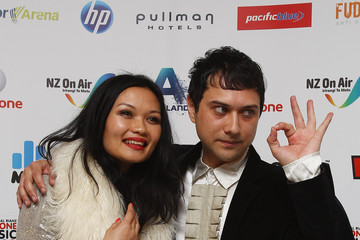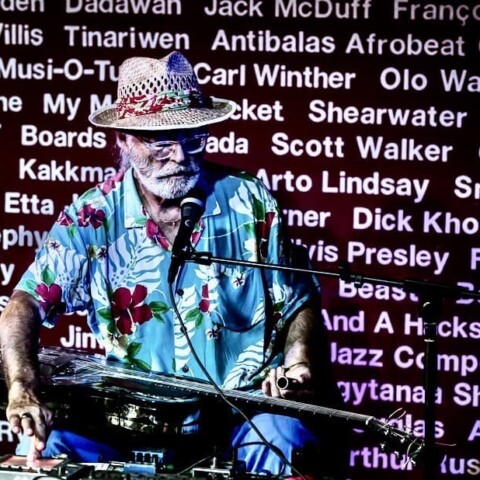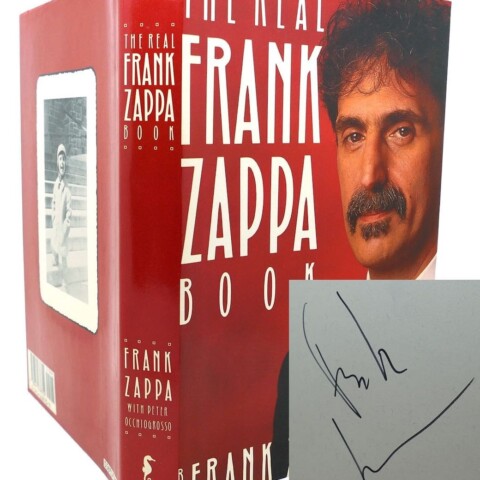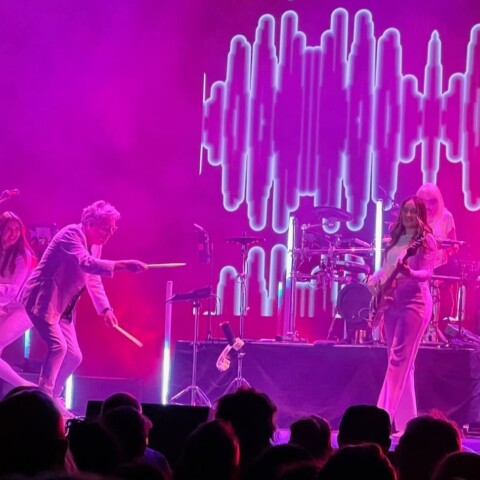IF YOU HAPPENED to read my Metro magazine feature on Bic Runga (November 2011 issue), you’ll be aware that NZ’s most successful singer-songwriter found herself with writer’s block after the rather melancholic tone of her last album, Birds (2005). That album put a serious dint in her box office returns, so Belle is an attempt to make an album with a commercial spin; one that will put food on the table. 
During her Press duties for this album, Runga expressed enthusiasm both for the production and inspiration of her romantic partner, former Mint Chick Kody Neilson, and her first-time partnering with a selection of co-writers. In other words, she sought and found enablers: those would bring her out of endless self-introspection and put the lid on all that melancholy stuff. Fresh young talent, and all that.
The best songs on Belle, however, are those she wrote without the assistance of others, and those in which Neilson’s contributions are minimised. This isn’t to belittle the talent of those writers, or of Neilson, but it does mean that Runga’s first album in six years is rather less than half a (already very short) good album.
Prime offender is Neilson, whose big mistake is an aesthetic one, taking on the affectations of past musical genres and ending up with pastiche. First track (and lead single) ‘Tiny Little Piece Of My Heart’ is an example of his folly. It’s a skilful Supremes/Tamla Motown copy, which has all the coy, knowing, saccharine cuteness of the real thing. They didn’t call pop music like this “bubblegum” for nothing, and it’s sad to see Bic Runga – who has always, for better or worse, sounded just like Bic Runga – reduced to this level. The record has her name on it, however, so she gets the blame for letting this travesty occur.
Second worst, and another inexcusable selection, is ‘Devil On Tambourine’, a song with lyrics, instrumentation, vocals and production by Neilson, which does feature a lovely guitar figure before it goes all Duffy-meets-faux-Gainsbourg-meets-Stereolab-meets-Belle&Sebastian on us. Again, it’s pointlessly retro.
Then there’s ‘Darkness All Around Us’, a song written, performed and produced by Neilson. Its take on ‘60s noir is quite effective, but why is it on a Bic Runga “solo” album?
The last song on the album, ‘Music And Light’, is one of her own songs, and it’s also disappointing, sounding like she gave up on it halfway to completion, then let Neilson in to layer his silly tambourine and xylophone effects. 
Thankfully, the rest is better, but we’re already four songs into a 10-song platter, and we’re mostly talking degrees of better, not brilliance.
One of the things Runga talked up in my interview was her excitement over collaborations with NZ songwriters like Dann Hume (Evermore) and James Milne (Lawrence Arabia). The first Hume track is ‘Hello Hello’, a song that’s so catchy you’ll be whistling it before it’s through its first play. I was. Unlike the aforementioned tracks, there’s not the same overweening sense of pastiche, and some of Runga’s innate melodic smarts do come through, but it is a little bit too brisk and does come across as rather pat. ‘Good Love’ is the second Hume write-to-order, and it’s a song so catchy you’ll be whistling it before it’s through it’s first play. Did I say that already? Runga, if I’m not mistaken, comes through loud and clear, and it’s a pretty good piece.
Now for the really good stuff. Having accused Runga and Neilson of pastiche and affectation, I’m setting myself up for a fall by lashing praise on her cover of ‘Belle’, the theme tune to a French TV show, and the very same that the lamentable Belle & Sebastian took their name from. But there’s something unfettered and disarming in her rendition, a purity of expression. As laughing Len sang: “There is a crack in everything/That’s how the light gets in”, and ‘Belle’ in its high-pitched, winsome way is white light.
Serge Gainsbourg is obviously an influence on Belle (the album), but her processing of Gainsbourg’s remarkable mix of late ‘60s/early ‘70s slick pop, Gallic charm and the imponderables of the universe leaves enough of herself to claim as her own. Again, instead of pastiche, the Gainsbourg/French influence is a stylish dressing that does little to distract from her songs or performance. This is true, too, of her insanely great collaboration with James Milne, ‘This Girl’s Prepared For War’. It cleverly appropriates stylistic elements from the spaghetti westerns of Ennio Morricone, together with the atmospheric beauty of a Scott Walker, and it’s mysterious and intoxicating.
But my two favourite tracks are both written solely by Runga, and there’s a simplicity to their construction and delivery that shows up the weaknesses I’ve already noted elsewhere. The first is ‘If You Really Do’, a simple song of the travails of love. But it’s not a patch on ‘Everything Is Beautiful And New’, the best track by far, and my favourite song of 2011 by a NZ artist. Inspired by her son’s birth and the existence of this new life, it taps into the core of Runga’s talent, and being.
During one of our interviews, Runga told me that if left to her own devices, she would probably have made a children’s album, or a Vashti Bunyan record, and how that could have led to commercial suicide. She’s probably right, but had she made a whole album of songs of the incredible beauty and insight of ‘Everything Is Beautiful And New’, that would have been something for the ages. GARY STEEL
Music = 3.5
Sound = 3.5

Bic Runga – Belle (Sony) CD REVIEW
Latest from Music

From The Archives: Pacific voyager Mike Cooper
Twenty years ago, GARY STEEL interviewed fascinating Rome-based UK-born folk experimentalist Mike Cooper on one of his Pacific journeys. Here's that story followed by

How not to meet a famous rock star
In 1989, CHRIS BOURKE was in New York and went along to a Frank Zappa book launch on behalf of a friend back home.

World’s Worst Records: Damon Albarn’s Everyday Robots
MATT KELLY is surprised and shocked to find that without the collaborations that are his stock in trade Damon Albarn has a yawningly empty

NZ rock still… rocks! We Search For Yeti!
They probably won’t be performing at Spark Arena anytime soon, but GARY STEEL reckons Wellington-based independent rockers Search For Yeti are well worth a

OMD, The Thompson Twins’ Tom Bailey, etc: LIVE REVIEW
Despite a strong aversion to such things GARY STEEL attends an ‘80s nostalgia music festival and survives to tell the tale.









